Choc Wedges, Coles Cafeteria and the red rattler: Victorian life of yesteryear
Victoria wouldn’t have been the same without red rattlers, choc wedges and the Coles cafeteria at Bourke St Mall. Take a trip down memory lane with these iconic stores, snacks and TV shows of the past.
VIC News
Don't miss out on the headlines from VIC News. Followed categories will be added to My News.
Some things will linger in the memories of Victorians of a certain age.
They’re gone now but they were great while they lasted.
We’ve lost pokies tours and Show Day, and the pub Ladies Lounge is a thing of the past.
From red rattlers and Coles Cafeteria, to Hey Hey It’s Saturday and skating at St Moritz, to here’s some more lost slices of the Victorian way of life.
SHIRL’S NEIGHBOURHOOD
You’re the lead singer of Australia’s most popular band. You’ve just left the band. You’ve had a couple of hit solo singles. What’s your next move?
If you’re Shirley Strachan, your next move is to become a children’s television host with a cast of puppets
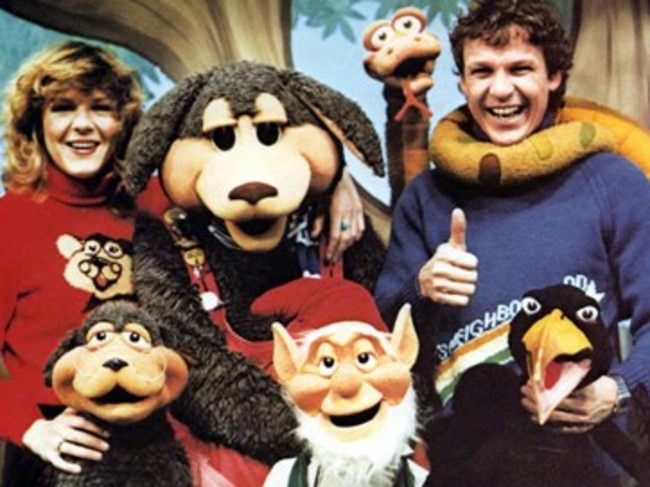
Strachan left Skyhooks in 1977 and, while still making music, in 1979 debuted as host of Shirl’s Neighbourhood on Channel Seven with co-host Liz Rule and characters including Norm the Kangaroo, Stanley the Snake, Greenfinger the Garden Gnome, Ol’ Possum, Bartholomew the Sheep and the irascible Claude the Crow (with his collection of Band Aids and toenail clippings).
The show came to an end in 1983 after more than 900 episodes and a Logie award for best children’s program.
Strachan joined Aussie supergroup The Party Boys in 1984 and returned to the ‘Hooks for several reformations in the 1980s and ‘90s.
He already had TV experience as a guest host on Countdown while with the ‘Hooks, and returned to TV and another former trade, carpentry, when he was hired as a presenter on Nine’s Our House.
He also filled in as a guest host on Hey Hey It’s Saturday before he was killed in a helicopter crash in 2001.
THE COLES CAFETERIA
For a generation of Victorian kids, no shopping expedition to the city was complete without a visit to the Coles Cafeteria at Coles Variety Store’s flagship Bourke Street location.
This tiled, laminexed celebration of good old Aussie tucker was a favourite with many families and was the pride and joy of G.J. Coles himself when it original cafeteria opened in 1930.
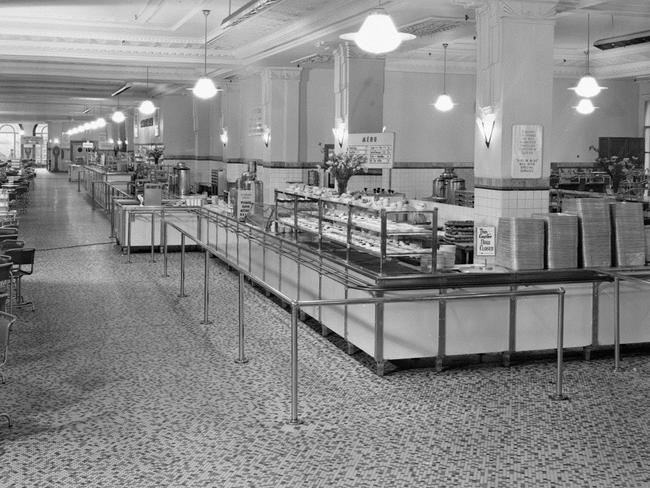
“GJ was extremely proud of the technical features of the cafeteria: two ‘subveyors’ — the first of their kind to be used in Melbourne — carried dishes from the cafeteria to the kitchen on the second floor,” a history of Coles published by the company in 2014 said.
“The main dishwasher, weighing two tons, handled 10,000 dishes per hour. The dishwasher, customers were assured, ‘sterilised all dishes, (which) passed through three lots of water’.”
The cafeteria was a model for the future of Coles Variety Stores in other capitals and major towns.
Coles’ efforts to make its Melbourne retail headquarters the leader of its day soon spread far and wide.
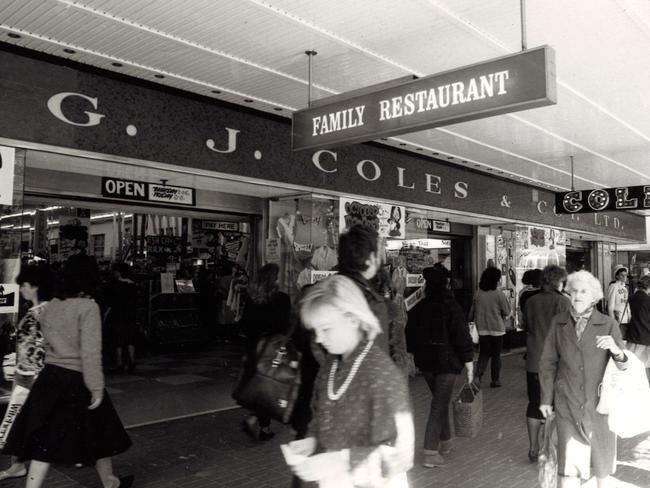
A second Coles Cafeteria opened in central Melbourne, with the two city stores pumping out 20,000 meals a day by 1956, and other cafeterias sprung up in Coles shops around the nation to feed hungry shoppers.
For many families, going to the Coles Cafeteria in Melbourne was an event that required best clothes and best behaviour. The reward? Some crispy, crinkle — cut chips and, if you were lucky, a scrumptious jellied dessert.
Coles Variety Stores faded into history in the 1980s. Coles Bourke Street, the home of the first cafeteria, shut in 1987.
HEY HEY IT’S SATURDAY
What more can be said about Hey Hey that hasn’t been said already by legions of fans who delighted in watching host Daryl Somers try to host a weekly television variety show with a pink ostrich as a sidekick while a cast of a couple of dozen clowns tried to stop him?
Hey Hey was a TV staple for 28 years, first as a Saturday morning cartoon show with a loyal following of mums and dads that laughed along at all the jokes the kids didn’t get, then as an adult-oriented Saturday night variety show.
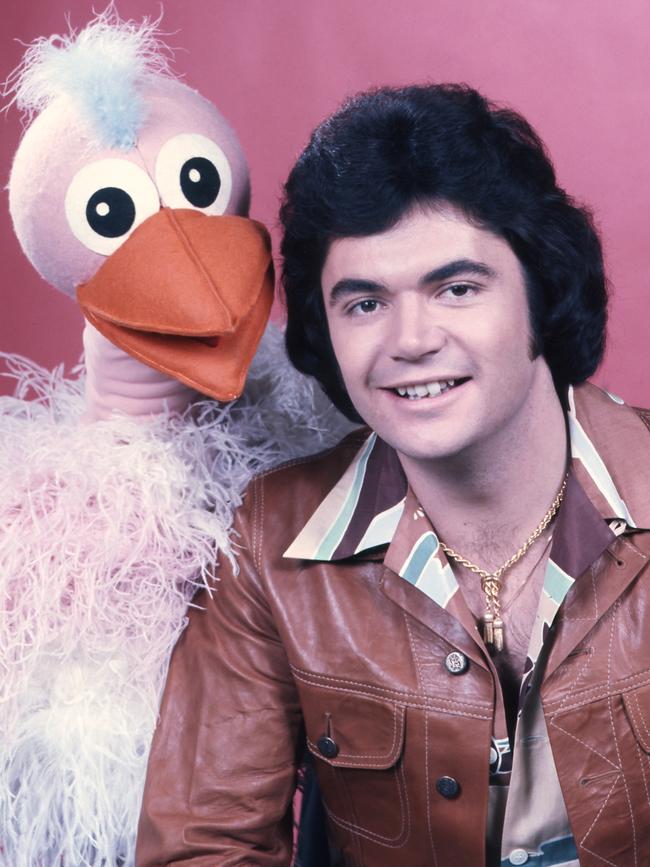

The party finally ended in 1999, and subsequent specials and revivals have failed to fire for Nine, but generations of TV lovers still remember years of anarchic laughs live from Nine’s old Bendigo Street, Richmond studios.
RED RATTLERS
These elegant Tait trains plied the Melbourne rail network for most of the 20th century.
They are also sadly missed by railway buffs.
The Taits entered service in Melbourne in 1910.
At first, they were hauled by steam engines, but by 1919 they had been converted to electric power.
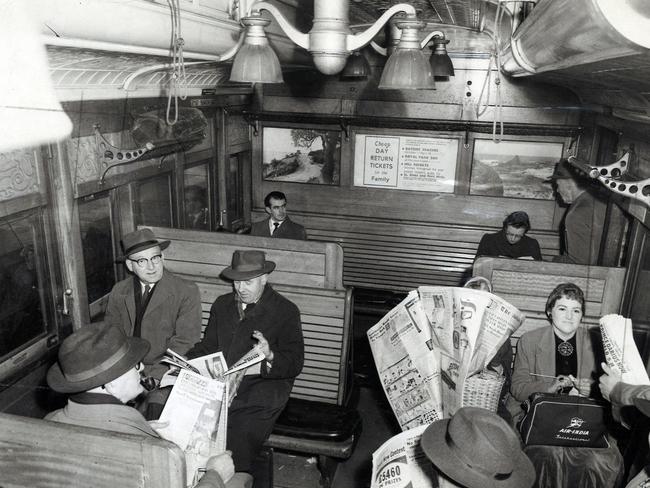
They featured beautiful timber and pressed metal finishes that, in their day, were the height of modernity.
They were manufactured at the Victorian Railways Newport Workshops until 1953, when more modern Blue Harris trains were introduced.
Vic Rail began to scrap red rattlers in 1974 as the newer stainless steel Hitachi trains came on line.
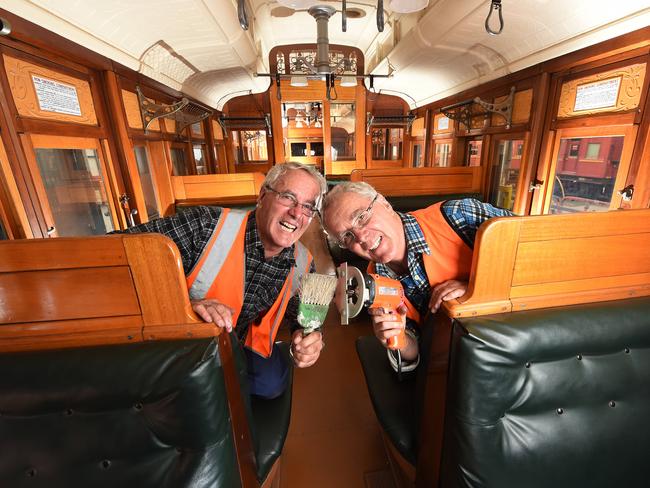
Because of the fire risk posed by their timber construction, red rattlers were prevented from entering the City Loop, and those red rattlers that remained mostly worked the Sandringham, St Kilda and Port Melbourne lines, which did not connect directly with the loop.
The last red rattlers were withdrawn from service at the end of 1984.
SKATING AT ST KILDA’S ST MORITZ
The St Moritz Ice Rink on The Esplanade in St Kilda was a mecca for skaters and ice hockey players from 1939 to 1981.
It opened in 1922 as a vast dance hall known as the Wattle Path Palais de Danse.
For a time, it was also the headquarters of Efftee Studios, the filmmaking company owned by Frank Thring Sr, before it was converted to an ice-skating rink.
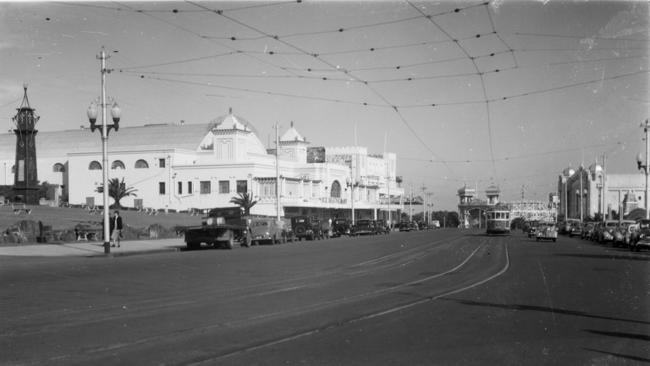
It was in an ideal location, just across from St Kilda Beach and down the street from Luna Park, to reel in punters looking for a little extra fun.
Entry back in 1939 was five shillings (about 50 cents) and that included skate hire.
The rink was popular with recreation skaters and ice hockey players, with local and interstate competitions played there.
The St Moritz fell out of favour by the 1970s and closed in 1981.
The following year, the building was destroyed by fire.
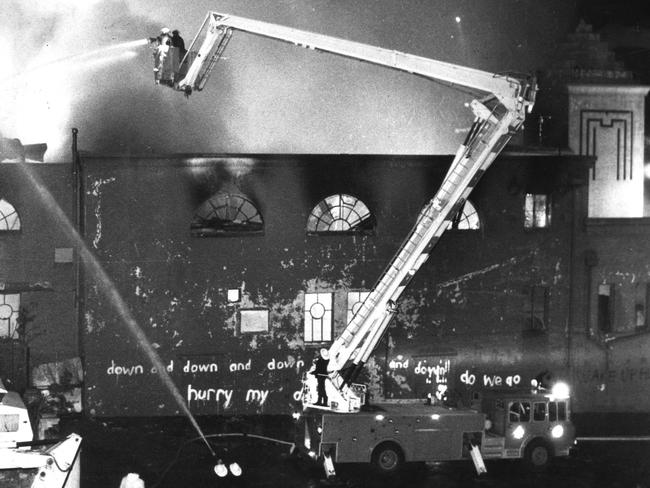
THE ELTHAM BARREL
The restaurant and architectural oddity known as the Eltham Barrel was, just as the name suggests, shaped like a giant barrel, lying on its side.
It was modelled on a similar building in Austria and was designed by Melbourne architect Jack Tipping with the two-way curvature of a barrel on the roof and walls.

The building featured the first use of Stramit building board in Australia and included recycled, handmade Hawthorn bricks and timber salvaged from a demolished East Melbourne mansion.
There was some criticism of the design from the architectural community but the Eltham Barrel was a popular landmark, set on a hill above Main Road in Eltham, until it burned to the ground in June 1989, 20 years after its completion.
It was also Tipping’s final project. He died shortly after its completion, aged 45, in 1969.
WRESTLING
For more than a decade, Melbourne was the home of World Championship Wrestling, a competition established by American-born Melbourne radio broadcaster Jack Little.
The cast of dozens of local and international wrestlers included Killer Kowalski, Mario Milano, Dusty “The American Dream” Rhodes, King Curtis, Skull Murphy, Dale Lewis, Larry O’Dea, the Von Steiger brothers, Andre the Giant and Sheik Wadi Ayoub were barely kept in line by Little as host.

Bouts were fought in other cities but the main game was at Melbourne’s Festival Hall.
Little convinced promoters Jim Barnett and Johnny Doyle that American-style professional wrestling was viable, and a cultural phenomenon was born.
But once Channel Nine dropped its WCW wrestling coverage in 1978, support for the sport quickly fizzled.
The name was revived in the United States in the 1980s, and the glitzy competition rekindled the popularity of pro-wrestling in the United States.
CHOC WEDGES
It’s still possible to get a vanilla Choc Wedge, but they used to come in many flavours.
Remember spearmint Choc Wedges? Choc Malt? There was even a butterscotch flavour for a while in the 1980s.
Peter’s Ice Cream first launched the mighty Choc Wedge in 1949, in vanilla form — just like an Eskimo Pie but in a wedge shape and with a convenient stick to save your ice cream from melting in its package.
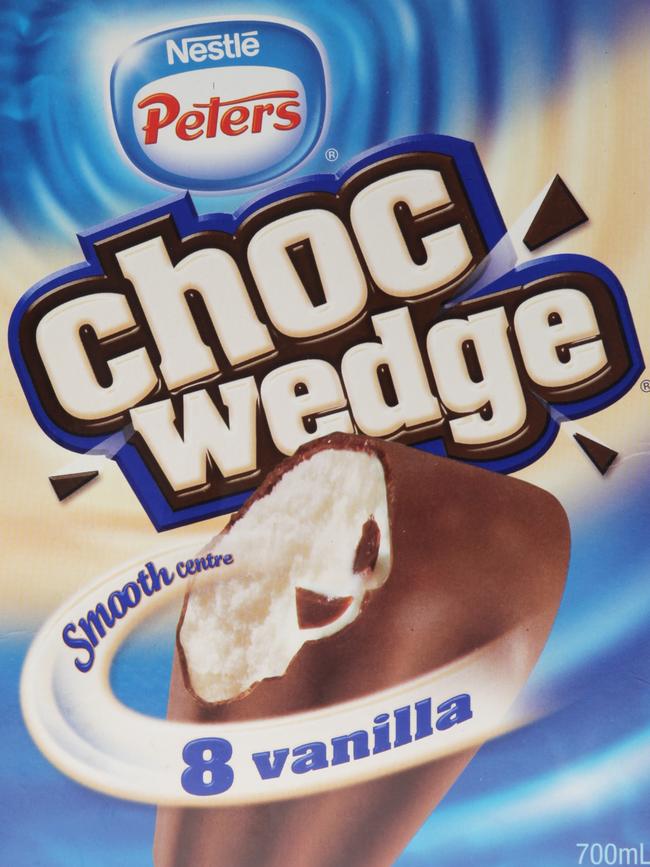
By the 1960s, they were coming from the factory at Peter’s Ice Cream’s national headquarters in Mulgrave.
The lost Choc Wedge flavours disappeared in the 1990s, while the vanilla Choc Wedge ceased to be around 2009.
THE WILLIAMSTOWN FERRY
Before the West Gate Bridge opened in 1978, there were two ways for motorists to get to Newport and Williamstown from the city — via Footscray and Williamstown Road, or via Port Melbourne and the Williamstown Ferry.
The ferry carried passengers across the lower reaches of the Yarra River between the end of Williamstown Road, Port Melbourne, and The Strand on the Newport side, behind the Newport Power Station.

The Williamstown council ran steam ferries across the river there from 1873, the third and last ferry from 1931.
The service had been losing money for years when the ferry broke down in 1974. It remained tied up but was a popular target for vandals until it sunk in May 1976.
READ MORE:
HOW TO TURN PANTRY STAPLES INTO FEAST
MYSTERY MAN BEHIND NED KELLY'S SUIT
MELBOURNE SCHOOL CANTEEN OF 1982
*a version of this story first appeared in the Herald Sun in 2016
